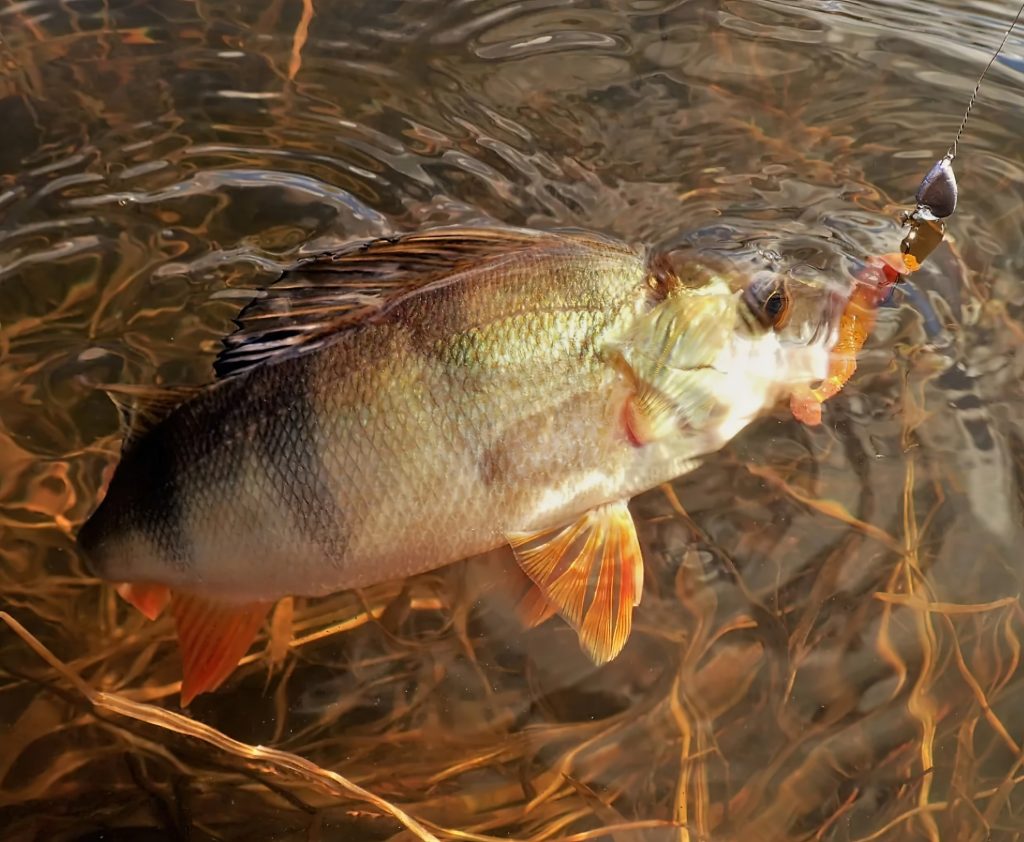As the autumn season approaches, anglers know it’s time to gear up for some exciting perch fishing. Perch are known for their elusive behavior, making them a challenging catch. However, with the right knowledge and techniques, autumn perch fishing can be a rewarding experience for any angler. In this article, we will explore the best strategies for successful perch fishing in autumn.
Understanding Perch Behavior in Autumn
As the summer ends and the temperatures start to drop, the behavior of perch changes significantly. Understanding how perch behave in autumn is essential for a successful fishing trip. During this time, perch tend to move to deeper waters where they can find cooler temperatures and a constant food source.
Another aspect of perch behavior during autumn is their schooling behavior. As the water cools down, perch tend to school together in large numbers. This means that if you find one perch, there are likely more in the same area. Look for areas with underwater structures, such as rocks and weed beds, as these are perfect spots for perch to school up.
Perch also tend to become more aggressive during the autumn season. This is because they are trying to fatten up before winter sets in. Using lures and bait that mimic their natural prey can be very effective during this time. Additionally, try to fish during low light conditions, such as early in the morning or late in the evening, as perch tend to be more active during these times.
Best Equipment and Gear for Autumn Perch Fishing
When it comes to autumn perch fishing, having the right equipment and gear can make all the difference. Here are some essentials that professional anglers recommend:
- Rod and Reel: For perch fishing, a lightweight spinning rod is recommended. A 6- to 7-foot rod with a medium-light action is ideal. Match this with a spinning reel that can handle 6- to 8-pound test line.
- Fishing Line: Fluorocarbon fishing line is recommended for perch fishing. It is nearly invisible in the water and has a low stretch, which allows for more sensitivity and better hook sets.
- Hooks and Lures: Jigs are the most popular type of lure for perch fishing. Use a 1/8- to 1/4-ounce jighead with a small plastic grub or minnow imitation. Size 6 to 10 hooks are ideal.
- Other Essentials: A good fishing vest or tackle bag is essential for carrying all your gear. Other important items include polarized sunglasses, pliers for removing hooks, and a landing net for safely handling fish.
Top Techniques for Catching Perch in Autumn
- Use the Right Lure: Perch can be picky eaters, so it’s important to choose the right lure. During autumn, perch feed on smaller fish, so use lures that imitate the size and color of their prey. Crankbaits, spinners, and jigs are great options.
- Find the Right Location: In autumn, perch tend to move to deeper waters, so it’s important to find the right location. Look for areas with a lot of underwater structure, such as drop-offs, weed beds, and rocky areas. These areas provide a safe haven for perch to hide and ambush their prey.
- Change Your Retrieve Speed: Varying your retrieve speed can help entice more strikes from perch. Start with a slow and steady retrieve, and then speed it up, slow it down, or even pause your retrieve for a few seconds to imitate injured prey.
- Use Light Tackle: Perch have a delicate bite, and using light tackle can help you feel more bites and increase your chances of a successful hookset. A light spinning rod and reel with 4-6 lb test line is ideal for perch fishing in autumn.
Tips for Staying Safe While Fishing
Safety should always be a top priority when fishing, and autumn perch fishing is no exception. Always wear a life jacket, even if you’re a strong swimmer. Check the weather forecast before heading out, as autumn weather can be unpredictable. Be sure to inform someone of your fishing plans, including your expected return time and location. Lastly, be cautious when handling hooks and sharp objects, and always carry a first aid kit.
Conclusion and Final Thoughts
Autumn perch fishing is a thrilling experience that requires skill, patience, and the right equipment. By understanding perch behavior in autumn, using the best equipment and gear, and implementing the top techniques, anglers can increase their chances of a successful catch. However, safety should always come first, and anglers should take necessary precautions to ensure a safe and enjoyable experience. With these tips and tricks, any angler can have a successful autumn perch fishing season.

